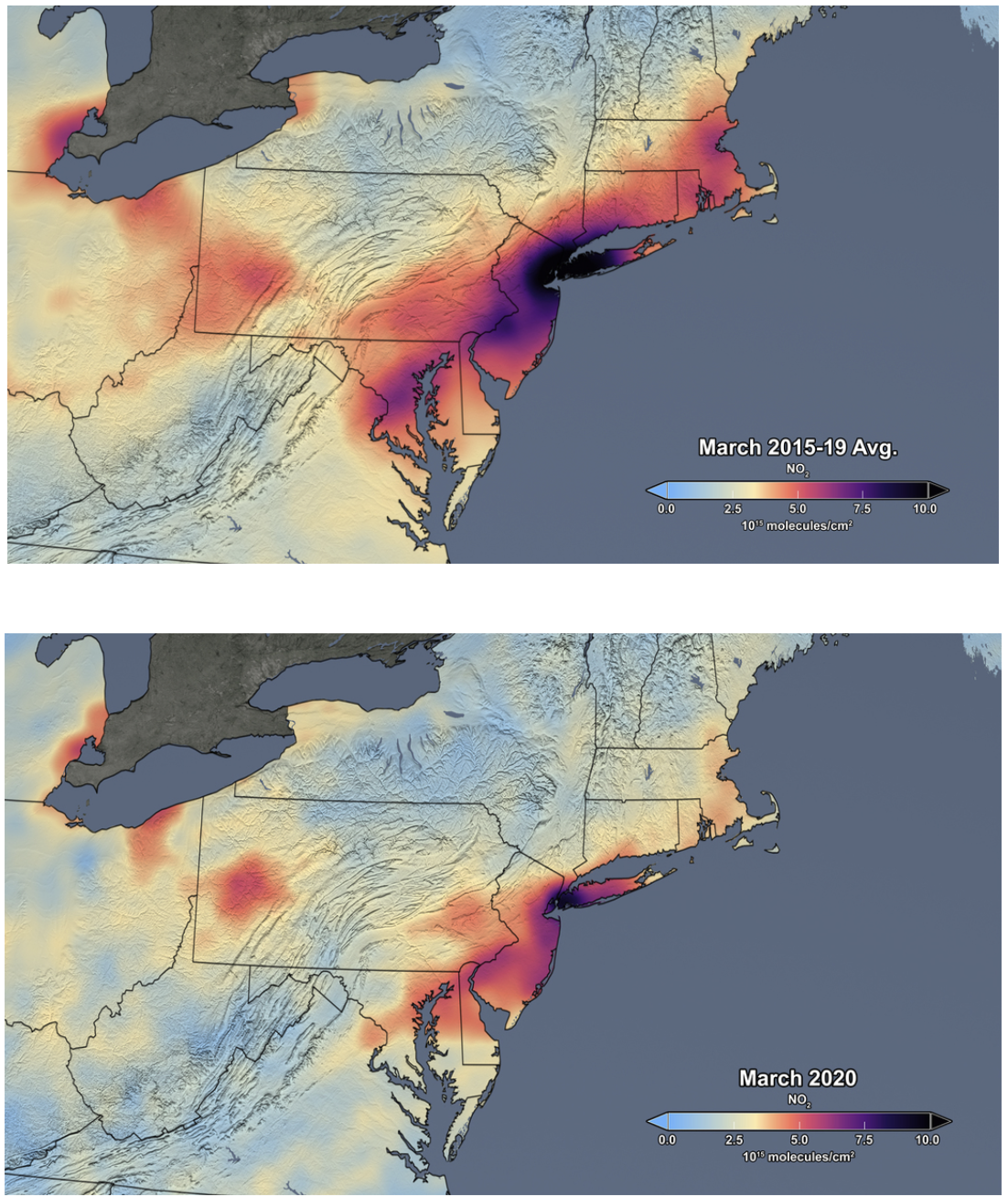Today marks 50 years of Earth Day. What started in 1970 as a local effort to increase understanding of our environment, it is now a global event spanning more than 190 countries with >1,000,000,000 participants. We are more environmentally aware than ever before: companies have climate change initiatives, carbon offsets are a real market, and we all look for ways to reduce, reuse, and recycle.
Short-Term Effects of #RemoteWork
Precisely because today is Earth Day, I started thinking about my own carbon footprint. Like many of you, I’m sheltering-in-place and experiencing #remotework full-time – a requirement of the new COVID-19 normal. With more people staying home, we are seeing interim effects such as a decrease in air pollution. I was particularly struck by this NASA Satellite picture showing a 30% drop in air pollution over the northeastern United States!
Green Meeting and Conferencing Tools with Webex
Even though millions of workers are now home, the work hasn’t stopped. Instead we’re turning to meeting and conferencing tools to connect with each other. In March alone, there were over several million total Webex meetings. We’re seeing huge increase in the rate of meeting attendees as well as the number of attendees using video versus audio-only. Now more than ever, we need to see one another when connecting.
Why share these statistics? We all hope the world starts to return to a sense of normalcy. But given that collaboration tools have allowed work to still move forward, business leaders are seeing that remote work, works. In fact, in the near term, I expect to see workplaces start to transform to offer broader support for “working anywhere.”
Environmental Benefits of Remote Work
Even before COVID-19, remote working had a positive environmental impact. According to Global Workplace Analytics, remote workers have the same effect on air quality as planting a forest. They also estimate that employees who work outside of the office even just 2-3 days a week have the potential of reducing greenhouse gas emissions by 54 million tons every year. Think about the collective, long-term effect this would have on climate change.
Reducing Carbon Footprints
So, what about my own carbon footprint? I sat down and calculated my CO2 reduction – and the result was incredible. By eliminating my daily commute and canceling business travel, I saved 6,652 KG of CO2 in the month of March alone. I don’t, however, think in terms of kilograms of carbon dioxide – I need to know what that equates to. My savings is equivalent to 8.7 acres of forest planted, or 748 gallons of gasoline or 7,328 pounds of coal burned. This is just my reduction. Imagine now what it would be if we totaled everyone’s?
Of course, I am aware that the underlying reason for this is a worldwide pandemic and massive shut-downs – an unsustainable option for the global economy. But it does show that we have an outsized influence over our environment. When the world goes back to normal, maybe we can commit to planting a tree, carpooling, or working remotely 1-2 days per week.
So, on this 50th Earth Day, let’s all look for ways we can influence change and promote a greener earth.
Learn More
How Cisco Moved its Entire Workforce to Remote In 10 Days
Enhancing Sustainability and Social Responsibility Through Collaboration with Cisco Webex






